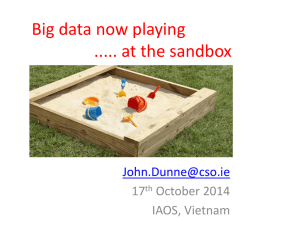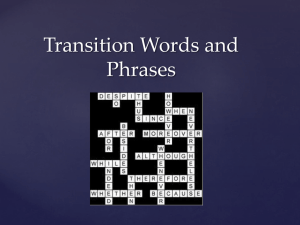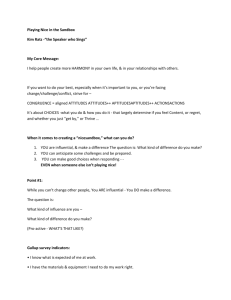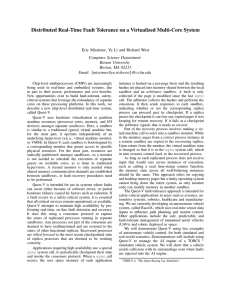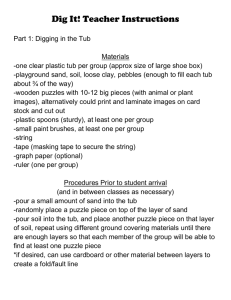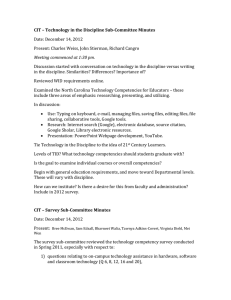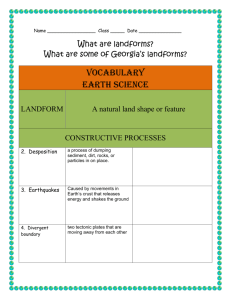The Sandbox Experiment
advertisement
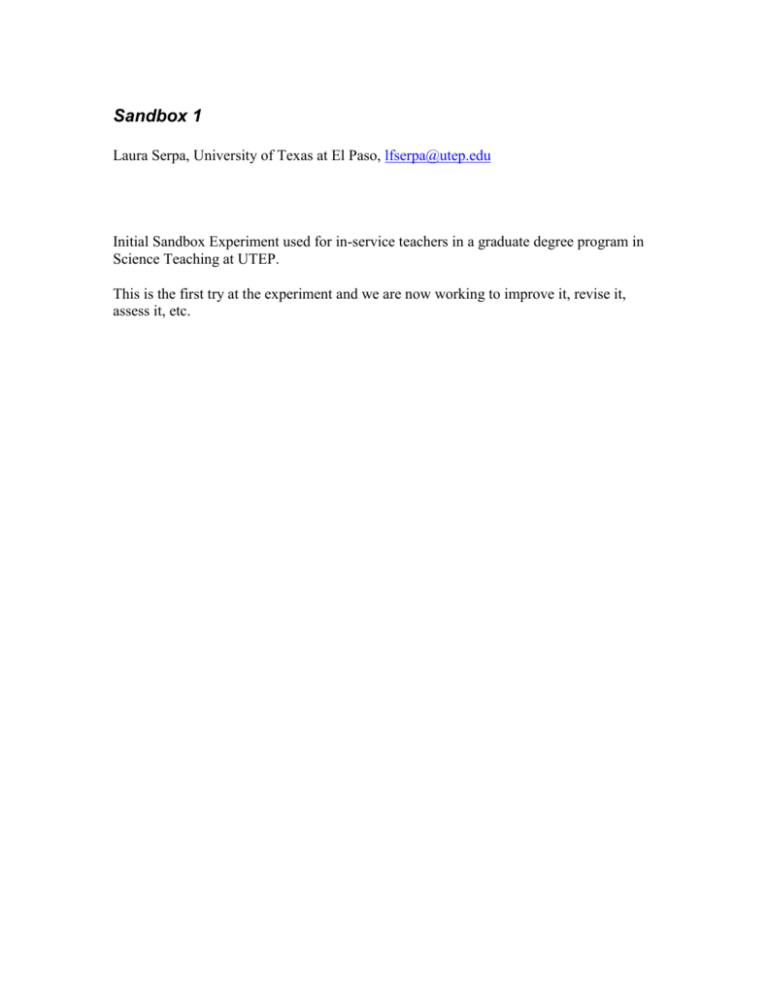
Sandbox 1 Laura Serpa, University of Texas at El Paso, lfserpa@utep.edu Initial Sandbox Experiment used for in-service teachers in a graduate degree program in Science Teaching at UTEP. This is the first try at the experiment and we are now working to improve it, revise it, assess it, etc. The Sandbox Experiment The MAT 5315 course activities included a variety of models with varying degrees of success. One goal of the MAT course was to utilize very inexpensive materials that teachers could translate to a classroom with relative ease. One example of a relatively successful experiment was the ‘sandbox’ model described below: The sandbox experiment: In the MAT 5315 course (Spring 2007) for graduate level inservice teachers, the students were given a series of questions about the nature of the Franklin Mountains in El Paso (Appendix 2). Although they had an earlier summer field course that covered the Franklin Mountains in great detail, they did not show much understanding of how the mountains had formed. After discussing several possibilities and being given a demonstration on how sand might be used to model the development of structures, they were give some colored sand and a variety of tools and boxes to try to recreate some of their ideas about how the mountains had formed. The results were innovative and included: 1. A simple horizontal compression of flat sand layers to form folds 2. The down-dropping of one side of layered sand to simulate a monocline with a hidden normal fault 3. The inflation of a plastic bag beneath the layered sand to produce the effects of magma intrusion The first model, horizontal compression of the sand, was similar to the initial demonstration but the other two models were clearly drawn from what the students had learned previously about the history of the mountains. The mountains do include active normal faults and intrusive rocks but the students had completely forgotten the steeply dipping sedimentary rocks (clearly visible from any part of the city) that make up most of the mountain range. We assume the reason for that is that their previous field class had emphasized the igneous and folded metamorphic rocks that were the instructor’s particular interest. The students’ exposure to sedimentary rocks, stratigraphy, and basic structural geology was limited to classroom lectures because those courses had to be taught at night to accommodate the in-service teachers’ schedule. It is clear that the one field class had been far more educational than all of the lecture courses the teachers had taken. The students were pleased with the results of their models and indicated they would consider presenting them to their classes as models for mountain building. However, when asked to quantify their results or discuss exactly how they could be reproduced in the classroom, the teachers’ answers were vague. They were then walked through a more rigorous sandbox experiment where they compressed the sand in increments of 1 inch (5% strain), then made detailed measurements of the surface topography on a grid, constructed cross sections, and contour maps for each strain increment and examined the results (Figures 1 & 2). The experiment took approximately 4 hours and the analysis was conducted by teams outside of class and then presented to the group. The tools used in this experiment were primitive—the students created the grid by extending two intersecting wires across the top of the box for each grid position marked along the top. They used an engineering rule to measure the depths and traced cross sections on Mylar film along the side of the boxes. Both Microsoft Excel™ and Golden software’s Surfer™ programs were used to contour the topography and changes in topography for each strain increment as shown in figure 3. Figure 1-measuring topography Figure 2. analyzing data from sandbox Figure 3. Sample of plots produced by students during the data analysis phase of the sandbox experiment. The software used for this display is Golden Software’s Surfer™. It was anticipated that the students would find this experiment too tedious and boring to use in their middle or high school classes but they appeared to feel this was a positive learning experiences that could be modified for a class. The student reflections for this experiment are included in Appendix 3 and they primarily show that the students were engaged by the activity. We were very limited by supplies and the fact that this was the first hands-on experiment for the class. Rather than deterring the students, this appears to have inspired most to think about ways to improve on the experiment for future applications.
